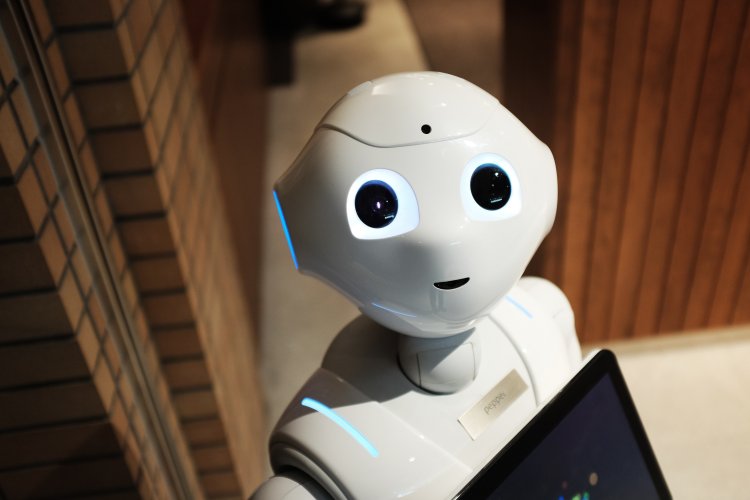How have global changes in traditional lifestyle occurred, and what transformations are waiting for us ahead? We have seen already robotization, artificial intelligence, exploration of planets and global village, while the changes ahead look even more interesting.
To the point
The attention of scientists had been focused on industrial revolution since the moment of social transformations in the United Kingdom. The perception of this phenomenon had been changing seriously, yet the scientists of late 19th – early 20th century described its nature very accurately. They believed the industrial revolution to be an important historical stage stressing the revolutionary nature and significance of all technical changes. It was a short enough and busy period of great inventions with preconditions for it having emerged long before the technological boom.
Now, under the industrial revolution, we understand the process of transition from agrarian economy with manual labor and craft production to industrial society with machine production. It all began in England…
English-like beginning
Great Britain, where it all began in second half of 18 – first half of 19th century, had become a historical pioneer of industrialization in Europe. According to Arnold Joseph Toynbee, 1760 was the reference point. The scientist says that “the old industrial system would hold out in England until 1760; as none of the mechanical invention had been introduced yet.”
The Great Industrial Revolution was related to transition from manual labor to the machine one, from manufactory to factory. One of the preconditions lay in invention of team engine which found its first application in coal mining industry. The use of steam machine suggested by James Watt in 1778 reduced the costs of coal mining by about 4 times. Later, the modifications of this machine were taken into service in baking and other industries. In the first half of 18th – second half of 19th century, lathes and milling machines were launched and raised the quality of steam engines.
The machines designed by Watt worked on low-pressure saturated steam (0.2-0.3 MPa), making low number of rounds per minute. It helped to reduce the consumption of coal per hp/h (horsepower per hour) several times if compared to previous mechanisms. Water wheel was completely ousted from mining industry.
he industrial revolution can be compared to sparkling fireworks – it was bright and short-term. Technical inventions were made instantly at that time. In late 18th – early 19th century English and American engineers combined boiler and engine into a single whole: locomotives and steamships were launched. The communication became streamlined, which made the life of people easier. The process of receiving information accelerated: newspapers were distributed in trains, and first media corporations were found.
Over a short period of time, steam machines replaced manual labor, communication became more reliable thanks to the launch of telegraph invented by Russian scientist Pavel Shilling, chemical industry was born, while the duration of working day increased due to invention of gas lighting.
The living standards and life expectancy rose. The population of Europe, which would never exceed 180 million people over the period from 6th to 19th century, grew to 460 million people in 1801-1914.
Versions 2.0 and 3.0
The second industrial revolution began in second half of 19th century and lasted until early 20th century. Its main features lay in mastering of continuous production, wide application of electric power and chemicals. The former one is about a car – the innovation of that time. Then, mass production was introduced in other spheres as well.
The third industrial revolution began in early 20th century and lasted until early 21st century. At that time, the mankind saw the transition to information and communication technologies in production, as well as the foundation of postindustrial society being laid.
What happens now?
The first three industrial revolutions were natural – the process was consistent and linear. A for the scope of the 4th industrial revolution, the depth and breadth of changes rise exponentially, and it is true not only for production sphere. The paradigms of communication, receiving and distributing information are changing.
he fourth industrial revolution has already begun. The start took place in 2010s and continues today. The features typical of it include completely automated manufacturing process, lines and products that interact with each other and with the consumer within the framework of Internet of Things concept.
Yet, let us come back to technologies. The most startling breakthroughs include artificial intelligence, robotization, unmanned vehicles, 3D printing, nano- and biotechnologies, cutting-edge materials, new methods of information acquisition and storage.
By the way, the Internet has become the main precondition of it. It has changed the regular way of life in all fields of human activities. At present, digitization has penetrated into all spheres of our everyday life. For instance, Russian scientists work on creating a digital twin of Baikal, while the technologies of augmented reality help make the most complex surgical operations.
Another important trend lies in robotization. Many countries are targeted at exploration of the Moon and planets. Here, robots may render aid by way of preceding man in landing on lunar surface. They already help astronauts during space flights, are used for scientific research and perform many operations. The future is already here, but the most interesting events are ahead.
Photo on the homepage and on the page: Alex Knight / Photo bank Unsplash






















